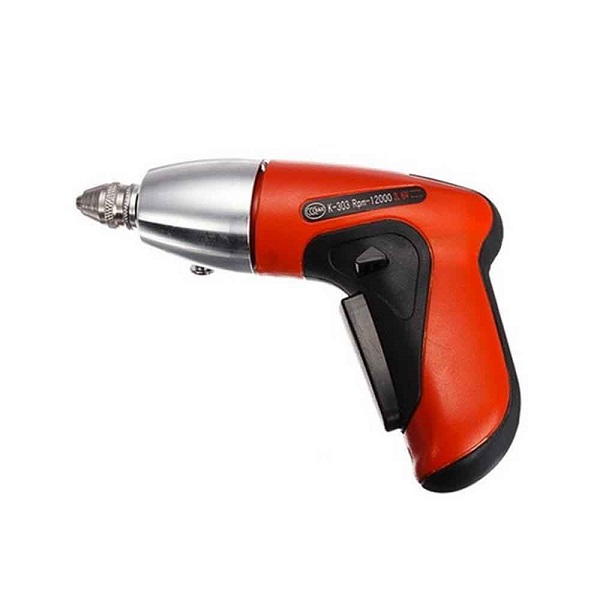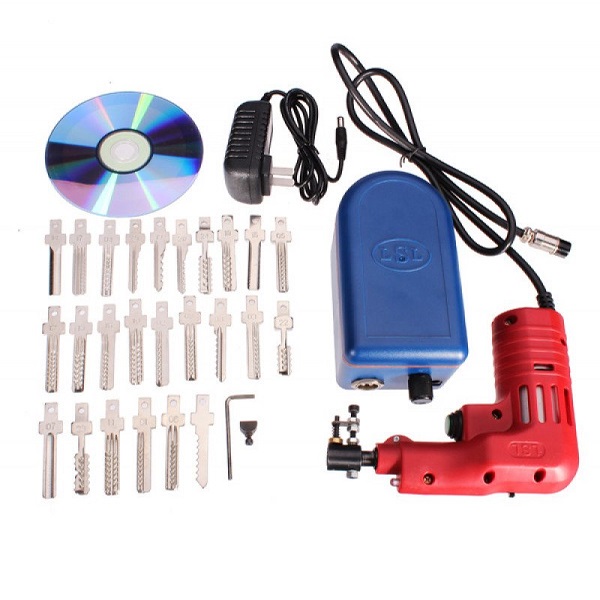Electric Lock Pick Gun Guide: How to Choose the Right Pick Tips for the Job
2025-10-15 11:04
When you decide to Buy Electric Lock Pick Gun, you are investing in a powerful tool for locksmithing and security testing. However, the gun itself is only half the equation. Its effectiveness is largely determined by the pick tips you attach. Selecting the correct tips is crucial for successfully and non-destructively manipulating a wide range of locks.
What are the Different Types of Pick Tips Available?
1.Single-Prong Tips (Standard Rake)
Single-prong tips are the most common and versatile type. They feature a single, often wavy or serrated, metal prong designed to rake the pins inside a lock. This action rapidly bounces the pins up and down, encouraging them to set at the shear line through vibration and manipulation. These tips are excellent for general-purpose use on a variety of standard pin-tumbler locks, making them a great starting point for beginners and a reliable tool for professionals facing common residential locks.
2.Dual-Prong Tips
Dual-prong tips have two opposing prongs, allowing them to engage with both the top and bottom of the keyway simultaneously. This design is particularly effective for locks with security pins, such as spool or serrated pins, because the dual action can help counter the false sets these pins create. They provide more aggressive raking action and are often the go-to choice for more experienced users dealing with slightly more advanced locking mechanisms than basic pin-tumblers.

3.Diamond and Ball Tips
Diamond tips, named for their pointed diamond shape, and ball tips, which have a small rounded end, are used for more precise, single-pin picking rather than raking. The diamond tip is excellent for individually lifting and setting pins, while the ball tip is useful for navigating around warding (the obstructions inside the keyway) and for probing. These are specialized tips favored by locksmiths who need to carefully work on a specific lock without the more aggressive action of a rake.
How Do You Select the Right Pick Tip for a Specific Lock?
1.Analyze the Lock Type and Keyway
The first step is to visually inspect the lock. Identify the type of lock, such as a standard pin-tumbler, dimple, or wafer lock. Then, examine the keyway—the shape of the keyhole. A narrow, paracentric keyway might require a slimmer, single-prong tip to fit, whereas a more open keyway can accommodate a bulkier dual-prong tip. Matching the tip to the physical constraints of the lock is the foundational step.
2.Consider the Lock's Security Level
The complexity of the lock's internal mechanism dictates the tip choice. For simple, low-security locks found on many interior doors, a basic single-prong rake tip is often sufficient. For locks with security pins, such as those in many commercial or high-security residential applications, a dual-prong tip becomes necessary to effectively handle the counter-rotation and false sets these pins introduce.
3.Match the Tip to Your Technique
Your personal approach also influences the selection. If you prefer a fast, raking technique to quickly open a lock, a single or dual-prong rake tip is ideal. If you are engaged in detailed, diagnostic work where you need to feel each pin set individually, a diamond or hook-shaped tip would be far more effective. The right tool aligns with both the lock's requirements and the user's skill and style.

What Factors Should You Consider When Choosing Pick Tips?
1.Material Quality and Durability
The material of the pick tip is critical for longevity and performance. High-carbon steel or tempered steel tips offer excellent strength, flexibility, and resistance to wear. Avoid cheap, soft metals that can bend, break, or wear down quickly inside a lock, potentially causing damage. A durable tip maintains its profile and effectiveness over many uses.

2.Tip Profile and Thickness
The physical dimensions of the tip must be compatible with your lock pick gun and the target locks. Ensure the shank fits securely into your specific gun model. Furthermore, the thickness and profile of the working end must be suitable for the keyways you commonly encounter. A collection of tips with varying thicknesses and profiles will give you the flexibility to handle a wider array of locking systems.
3.Versatility vs. Specialization
Consider your typical use case. For a general-purpose kit, a selection of versatile single-prong and dual-prong rakes will cover most situations. However, if you frequently work on specific, high-security locks, investing in specialized tips designed for those exact mechanisms will yield better results and improve your efficiency. Balancing a core set of versatile tips with a few specialized ones is a sound strategy.
In conclusion, mastering your electric lock pick gun involves understanding the nuanced role of each pick tip. By carefully considering the lock type, security features, and tip quality, you can build an effective toolkit. While specialized tools are valuable, knowing how to effectively use a well chosen set can make all the difference, even if your initial goal was to find a Cheap Electric Lock Pick Gun. The real value lies not just in the tool's cost, but in the knowledge of how to apply its components correctly.

 Like Us on Facebook to enjoy 5% discount
Like Us on Facebook to enjoy 5% discount